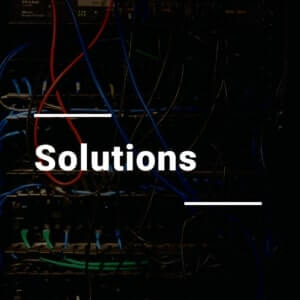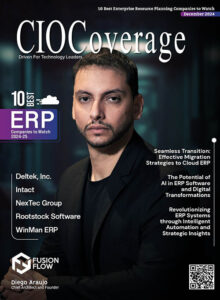 Vodafone Germany became the first operator to launch 5G standalone in Europe and is bringing a wealth of new opportunities and use cases to shape Germany’s 5G future
Vodafone Germany became the first operator to launch 5G standalone in Europe and is bringing a wealth of new opportunities and use cases to shape Germany’s 5G future
Every day we learn more and more about the potential that 5G has to transform the world and how the benefits that 5G brings, even when stated in a few words, reveal enormous transformative implications in almost all industries and disciplines.
The benefits that 5G technology brings encompass fast speed, low latency, and the ability to connect a very large number of devices that are suited for very high end applications. All three breakthroughs combined lead to major business and technology innovations. Operators and manufacturers have got down to work to adapt their equipment and offer consumers this type of connectivity.
The digital landscape of service providers is expanding, bringing with it new use cases and opportunities for monetization and competitiveness. Service providers that successfully transition to 5G will be able to benefit from new business applications, factory automation, Internet of Things (IoT), autonomous vehicle operation, and consumer services such as gaming and augmented reality (AR) and virtual reality (VR).
If 4G and its versions allowed people to connect, 5G will allow us to massively connect to the things that surround us. Building the appropriate 5G infrastructure becomes an imperative. Now, how can 5G be rolled out in the fastest, smoothest, and most efficient way possible, while meeting the key objectives of successful coexistence with 4G and continuous growth?
With 5G telecom operators have a new opportunity to maximize use of their spectrum. Operators will need to develop their spectrum strategies based on their own particular business focus, and the frequencies available to them, today and in the future.
So, how to handle 5G migration successfully? Migrating to 5G is a multi-faceted process, with many aspects to consider along the way. A successful 5G migration hinges on a stable end-to-end system, and a 5G Core is the foundation for this. It’s here that network services come together and can cater for the speed and flexibility that 5G requires to enable new business models and revenue opportunities.
The creation of a combined 4G-5G network requires careful planning and a holistic strategy, as the introduction of 5GS has significant impacts across all network domains, including the RAN, packet core, user data and policies, and services, as well as affecting devices and backend systems.
For most mobile operators, the introduction of the 5G System (5GS) will be a migration from their existing Evolved Packet System (EPS) deployment to a combined 4G-5G network that provides seamless voice and data services. This migration requires a carefully tailored, holistic strategy that includes all network domains and considers the operator’s specific needs per domain.
In the rapidly changing environment of communications technology, Ericsson has been a major contributor to the development of the telecommunications industry and is one of the leaders in 5G. To roll out 5G, Ericsson’s approach is about building for the future in today’s networks.
Ericsson’s end-to-end 5G Platform, across radio, core and transport networks together with OSS/BSS and network services enables operators to evolve to new 5G capabilities at a speed that matches their own business strategy, while enhancing current 4G business by reducing risk and making best use of current infrastructure.
Currently, 110+ customers have chosen Ericsson’s 5G Cloud Core solutions to build their 5G Core Networks.
Monica Zethzon, Vice President and Head of Solution Area Packet Core, at Ericsson, explained recently:
“Core networks provide the foundation for networks of the future. With our Cloud native dual-mode 5G Core, a solution that combines EPC and 5GC network functions into a common cloud native platform for efficient TCO and smooth migration to 5G, we are offering CSPs a strong starting point.”
“There is not just one path a CSP can take on their journey to 5G Core, instead they should choose the route that best suits their business needs. For more than a hundred of our packet core customers, this journey has already begun with a seamless software upgrade on their existing Ericsson Evolved Packet Core (EPC). This allows them to add support for 5G non-standalone (NSA) – a step that upgrades the core to ‘5G EPC’ which is proven as the best way to bring 5G services faster to the market, while paving the way for 5G standalone (SA).”
This is the case of Vodafone’s deployment of Europe’s first commercial 5G standalone core network. Vodafone Germany became the first operator to launch 5G standalone in Europe and is bringing a wealth of new opportunities and use cases to shape Germany’s 5G future.
In April 2021, Vodafone Germany became the first operator to commercially launch 5G standalone (SA) in Europe. In contrast to the more limited capabilities of their 5G non-standalone (NSA) network, the implementation of Ericsson’s cloud native dual-mode 5G Core has brought with it a wealth of new opportunities and use cases.
The process has required a steep learning curve for both teams but with continuous learning, development and implementation, the result is a highly capable, fully standalone, cloud-native 5G network that is ready to be used by Vodafone and their partners as a springboard for truly ground-breaking solution innovation.
Vodafone is considered a key contributor to the development of Germany’s digital infrastructure, whose customers rely on them to deliver the best in connectivity.
From the core network applications perspective, the cloud-native 5G Core was deployed as an overlay to, and tightly-interworking with, the existing physical and virtual EPC network serving 4G and 5G NSA services. This allowed more deployment flexibility and minimized the risk of impacts to existing services.
As Vodafone Germany’s journey into a one core solution to serve all its different access types continues, the Ericsson 5G Core solution will be gradually expanded to include EPC-related network functions, to allow the migration of all 4G and 5G NSA traffic.
Like any significant network upgrade, Ericsson’s dual-mode 5G Core deployment was not without its challenges.
“It’s a real step-change in terms of the technology we’re using, so there’s definitely a challenge in making sure our teams have the right skills and the right understanding and knowledge of that new technology.” says Julia Velasco, Head of Data Core Engineering, Vodafone Group.
The use of containers, software-defined networking and service-based architecture were all new not only to Vodafone, but the whole telecom sector, requiring time and resources to be set aside for building knowledge within their teams. The continuous learning approach embedded into Vodafone’s culture proved invaluable to overcoming this challenge.
However, Julia explains that the evolution to cloud native is more than a knowledge jump, but a mindset change. “The 5G Core is a full transformation, not just one element of the network.”
Reaching the full 5G potential with 5G Core and NR Standalone 5G Core and 5G New Radio Standalone will enable communications service providers to reach the full potential of 5G. In turn, this will open up a multitude of new business opportunities for mobile users and industries. Let’s explore the benefits.
Vodafone Germany’s key learnings from its adoption of 5G SA and cloud-native technology in the core network can be grouped into three main areas:
- Organization and communication: The cloud-native transformation required both business and technical teams to be organized and work together in ways that went beyond traditional organizational structures.
- Deployment speed: Another important factor for Vodafone Germany to achieve its time-to-market target was daring to work in the live system, with activities that would usually be done first in a lab environment.
- Adaptability and flexibility: Continuous learning and adjustments at every step, while keeping the main goal in sight, needed to be part of the deployment process. Vodafone Germany’s capability to quickly analyze, adjust and implement changes and decisions along the way, as well as its capacity to learn from mistakes, allowed them to fine-tune ways of working and adjust priorities on a daily basis.
The collaboration with Ericsson, and Ericsson’s ability to quickly adapt to the requirements or limitations from third party components in the solution, was also essential for the success of this project.
“In order to be first in the telecommunications industry, you really need to be ambitious and work as a team. There was a perfect collaborative opportunity with Ericsson in the endeavor to be the first in Germany and Europe to deliver 5G core services. We had a lot of fun achieving this goal together.” Guido Weissbrich, Chief Network Officer, Vodafone Germany.
















